Sunday, September 21, 2014
60 MILLONES DE OBJETIVOS NIKKOR CONSTRUIDOS
Nikon está de celebración. Desde el inicio de la producción de objetivos Nikkor en 1959 hasta el mes pasado, marzo del 2011, se han fabricado un total de 60 millones de ópticas. En agosto de 2010, la cifra alcanzada fue de 55 millones de objetivos producidos, es decir que en unos 7 meses se ha aumentado la cifra en 5 millones de ópticas más.
PDF Nikon en inglés
Saturday, September 20, 2014
NUEVO CATÁLOGO PDF DE ÓPTICAS NIKON
Nikon ha editado un nuevo catálogo de obvjetivos disponible en PDF. En él ya podemos ver los nuevos objetivos Nikkor recientemente presentados como el 24-120, 28-300 o 55-300, etc.
http://imaging.nikon.com/products/imaging/lineup/lens/pdf/nikkor_lenses.pdf
Friday, September 19, 2014
User Manual Nikon D4 English Spanish
Other new items on the Nikon D4 includes a 3.2-inch LCD with VGA resolution, the ability to magnify the image up to 46x, and ambient light sensor to automatically brightens or dims the screen based on lighting conditions. 51-point AF array improves sensitivity to -2 EV, and can accommodate up lens f / 8. Video was also upgraded from 720p to 1080p at 30fps D3S. There is much more to the Nikon D4, which will be discussed in the technical section below.
Almost the same size as the D3S, the Nikon D4 is just a fraction of an inch shorter, measuring 6.3 x 6.2 x 3.6 inches (160 x 156.5 x 90.5mm), and weighs 47.3 ounces (£ 2.95, 1,340 g) body only with battery and XQD memory card. Overall feel in the hand is similar to the D3S, but there are many differences in cosmetic and ergonomic Nikon D4 noteworthy.
- Download User Manual
- English
- Spanish
- WT-5 English
- WT-5 Spanish
- Network Guide English
- Network Guide Spanish
- Professional Setting Guide
- View User Manual
- English
- Spanish
- WT-5 English
- WT-5 Spanish
- Network Guide English
- Network Guide Spanish
- Professional Setting Guide
Monday, September 8, 2014
Panasonic Lumix DMC FX80 Digital Compact Camera Users Manual
Panasonic Lumix DMC-FX80 Digital Compact Camera Users Manual (Owners Instruction) - The MEGA O.I.S. compensates blurring caused by hand-shake. Even slight hand-shake movement is accurately detected by a sampling frequency of 4,000 times per second, and compensated to produce sharp, clear images. The MEGA O.I.S. lets you shoot in dimly lit rooms or evening illumination without losing the mood. It also works for macro shots and zoom shots, which are especially susceptible to hand-shake. The Active Mode effectively suppresses blur in video recording especially at wide angle while walking or playing with your children.
A variety of special effects that add fun to shooting experience are newly integrated in Lumix DMC-FX80. In addition to 3D Photo mode and Panorama Shot, the Creative Control mode offers a selection of artistic filter effects when recording images; Expressive, Retro, High Dynamic, Sepia, Dynamic Monochrome, High Key, Low Key, Miniature Effect, Toy Effect and Soft Focus. Miniature Effect mode in which the peripherals are defocused while saturation and contrast is emphasized to look the picture like a diorama. It is also possible to look images nicer even after shooting with Artistic Retouch (Creative Retouch, Defocus Effect, Color / Brightness), Beauty Retouch and Auto Retouch. You can Free Download Panasonic Lumix DMC-FX80 Operating Instruction Guide / Owners Manual / Users Manual (PDF format) below.
Also, iA (Intelligent Auto) mode lets users leave everything to the camera to take beautiful images with MEGA O.I.S. (Optical Image Stabilizer) with Active Mode and Motion Deblur mode together with AF Tracking, Intelligent ISO Control, Face Recognition, Intelligent Scene Selector and Intelligent Exposure. Once you enter the iA mode, these multi-capable functions happen automatically, so that you can shoot without the bother of adjusting settings every time conditions change.
Key Features of Panasonic Lumix DMC-FX80:
- 12.1-megapixel Hi-Speed CCD sensor
- LEICA DC VARIO-SUMMARIT 5x (24-120mm) Ultra Wide-angle Len
- MEGA O.I.S. (Optical Image Stabilizer)
- Sonic Speed AF
- 3.0-inch Smart Touch-Lcd LCD
- 1920 x 1080 full-HD video recording in AVCHD/MP4 with Dolby Digital Stereo Creator
- iA (Intelligent Auto) Mode
- Creative Control
- 3D Photo Mode
- Panorama Shot
- 3D Photo Mode
- Handheld Night Shot Mode
- USB power charging
Tuesday, September 2, 2014
GoPro Hero 3 User Manual
As well as toughness and durability in a variety of fields GoPro cameras also produce extremely high quality of images and videos so this product is very popular, but today many of the GoPro Hero 3 users difficulty in using this camera and not a few who have different problems either because of an error usage and so forth
This time I decided to share links GoPro Hero 3 Complete Manual User Guide from various series such as Black Edition, Silver Edition and White Edition and in the various languages as shown below :
Download GoPro Hero 3 Black Edition in English here
Download GoPro Hero 3 Black Edition in Portuguese here
Download GoPro Hero 3 Black Edition in Italian here
Download GoPro Hero 3 Black Edition in French here
Download GoPro Hero 3 Black Edition in German here
Download GoPro Hero 3 Black Edition in Spanish here
This time I decided to share links GoPro Hero 3 Complete Manual User Guide from various series such as Black Edition, Silver Edition and White Edition and in the various languages as shown below :
Download GoPro Hero 3 Black Edition in English here
Download GoPro Hero 3 Black Edition in Portuguese here
Download GoPro Hero 3 Black Edition in Italian here
Download GoPro Hero 3 Black Edition in French here
Download GoPro Hero 3 Black Edition in German here
Download GoPro Hero 3 Black Edition in Spanish here
Download GoPro Hero 3 Black Edition in Japanese here________________________________________________________
Download GoPro Hero 3 White Edition Manual in English here
Download GoPro Hero 3 White Edition Manual in Japanese here
Download GoPro Hero 3 White Edition Manual in French here
Download GoPro Hero 3 White Edition Manual in Portuguese here
e Download GoPro Hero 3 White Edition Manual in German here ________________________________________________________
Download GoPro Hero 3 Silver Edition in English here
Download GoPro Hero 3 Silver Edition in German here
Download GoPro Hero 3 Silver Edition in Portuguese here
Download GoPro Hero 3 Silver Edition in Japanese here
+ bonus how to using GoPro Hero 3 + Wi-Fi Remote, Pairing Manual ebook here may be useful for you who need this manual :) and next post I will shared GoPro Hero 3+ manual cheers....
Monday, September 1, 2014
Digital Camera Werra Matic
- Type: Werra Matic
- Serial No: 387568
- Manufactured: 01/1960 - 12/1961
- Manufacturer: Carl Zeiss Jena
- Shutter: Prestor RVS (metal leaf shutter)
- Shutter speeds: 1, 1/2, 1/4, 1/8, 1/15, 1/30, 1/60, 1/125, 1/250, 1/750 and B
- Lens: Carl Zeiss Jena - Tessar 2.8/50
- Aperture: 2.8 - 22 in half stops
- Lens No: 6119161
- Lens mount: special Werra bayonet with a lens fixing ring
- Last CLA: 06/2010
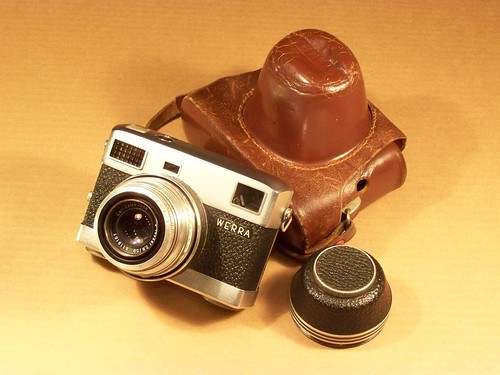
My first vintage camera made in DDR by Carl Zeiss Jena. It started something in me which led to lots of spendings on junk cameras and scratchy lenses.
The Werra is a fine piece of engineering from the early 50s made by German engineers after coming home from Russian hard labour. (The same engineers who designed the famous Sonnar lens before WWII and later its russian copy called Jupiter. Read the other part of their story here.) Being left out from years of lens research and development, the factory gave them a toy-project: design of a compact camera. In the lens factory. The engineers could easily feel that there was no need for them anymore. With the Werra, they wanted to prove that they were the best optical engineers far and close. And they were, indeed. They produced something unimaginably sophisticated. The applied technical solutions were far ahead from the others and the camera had a really unique and futuristic look. Just compare it with any other camera of that age: the Werra will stand out.
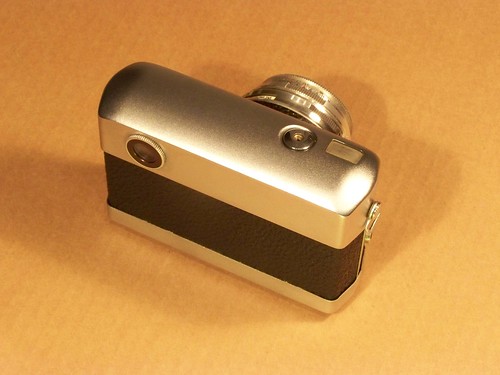
A Werra Matic is one of the most undervalued vintage cameras. Its small but it contains every possible comfort from the coupled light meter (!) and the coupled rangefinder to the interchangeable lenses (it comes with a great Tessar) and flash sync at all speeds. It feels like a sophisticated and reliable precision clock. In fact, it is more sophisticated than anything else in the 50s, including the precision clocks.
Its extremely stable. Shooting is like pressing a microswitch which triggers the clock mechanism. You can hear the fast ticking. Everything is easy to operate. Just one thing to get used to it: there is a ring and a switch button to set the speed, the aperture and to shift. Its a bit tricky for the first time but turns out to be practical when it comes to shooting in a given light condition.
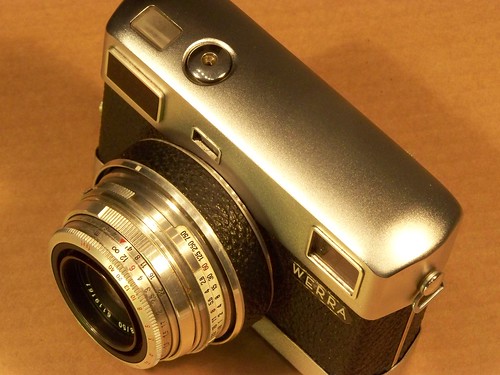
There is no film wind lever or knob, as you probably realized. The film winding and shutter charging is done by turning the leather-covered ring at the lens base clockwise 60 degrees. Its easy, handy and fast, you dont have to take the camera away from your eye. I have to mention the lens cap which can be used as a protective lens cover and a lens shade and as well. Just watch:
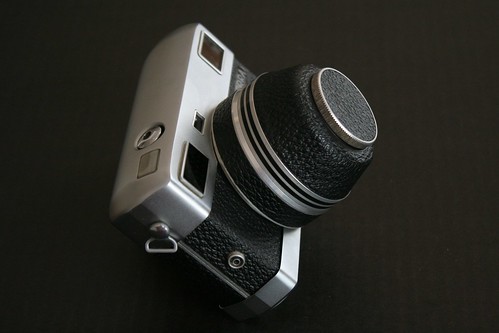
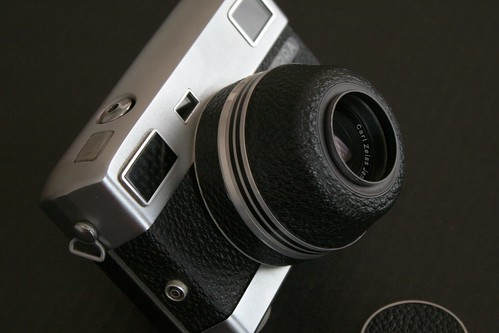
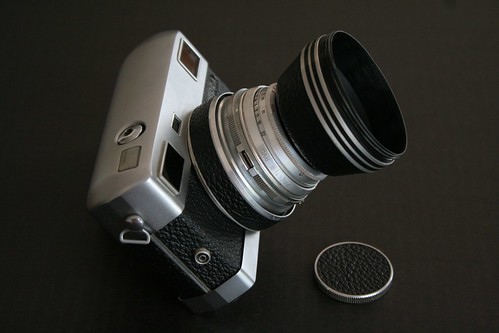
The viewfinder is an optical magic. You can see the shutter speed, the aperture, the result of the light metering and the focus setting in an easy-to-overview setup. And its bright. Its damn bright. Its so bright actually that if its too dark outside to see the aperture and speed settings on the rings then you dont have to look for your torch - just look into the viewfinder. How on earth can it be brighter than the outside environment, I dont know. But the thing I know is that it was a big help for me taking night pictures.

And the rangefinder, oh my God! The rangefinder is not an ugly pink spot on a blueish image, no. Its a prism inserted in the center of the view, clearly visible even in really low light. Its usability is simply not in the same dimension as the other rangefinders of the 50s.
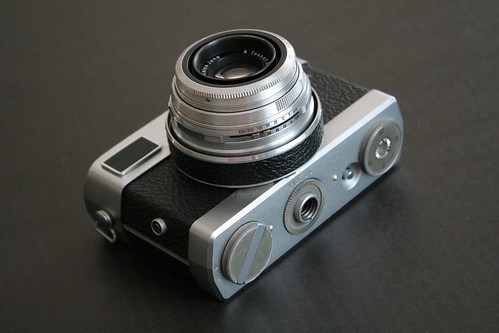
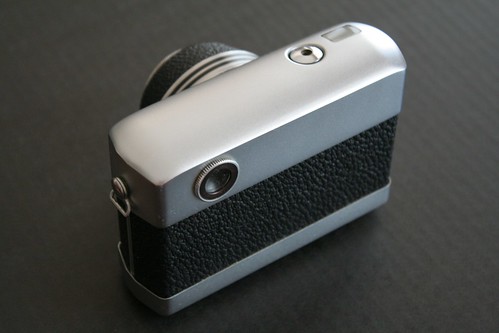
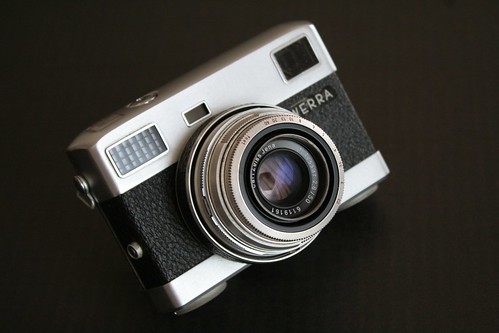
There is a Werra for everyone - said the ad. The Carl Zeiss Jena factory made it sure with lots of Werra types and accessories.
Models:
- Werra - the original simple viewfinder model with fixed lens
- Werra 1 - simple viewfinder model, fixed lens
- Werra 2 - viewfinder, uncoupled light meter, fixed lens
- Werra 3 - coupled rangefinder, interchangeable lens
- Werra 4 - uncoupled light meter, coupled rangefinder, interchangeable lens
- Werra 5 / Werramatic / Werra Matic - coupled light meter, coupled rangefinder, interchangeable lens
- Werra E Microscope - no viewfinder, no lightmeter, just a body with a Prontor Press shutter and a microscope adapter
Lens selection:
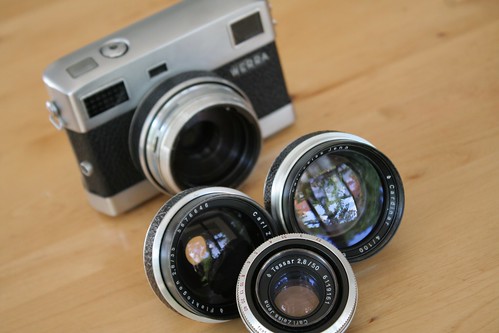
Some fixed lens types came with a built in Novonar but Tessar was the default lens. The interchangeable lens types always came with a Tessar 2.8/50 basic lens. There was a wide angle Flektogon 2.8/35 and a short tele Cardinar 4/100 available. Both lenses could do the trick with the coupled light meter just as good as the little Tessar did: you just put the Cardinar or the Flektogon on the camera, twist the aperture ring back and forth and the magical light meter reads the actual aperture setting mechanically.
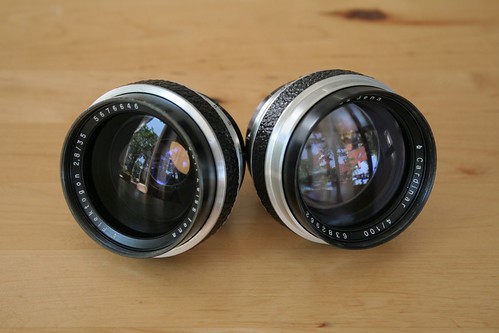
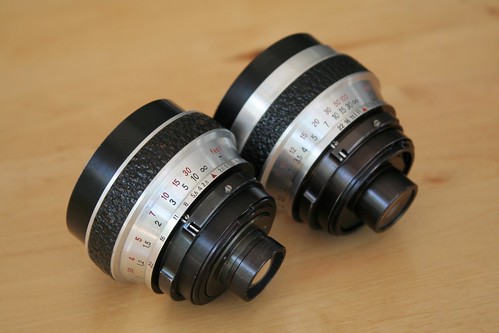

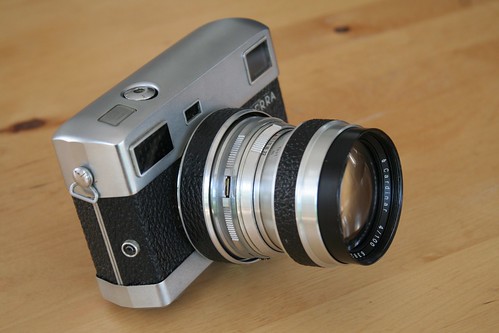
Accessories:

There is a quite strange looking Macro Set for the Werras which has prefix lens for the rangefinder as well so focusing could be done as usual. The set consists of two prefixes: the Werra Naheinstellgerat 1 for 0.8 - 0.4 meter range...
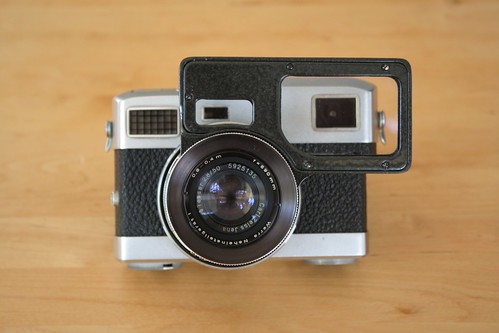
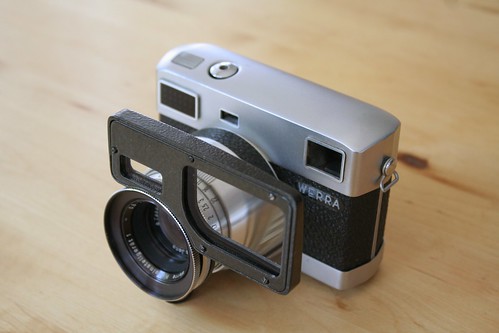
... and the "supermacro" Werra Naheinstellgerat 2 for 0.4 - 0.3 meter.


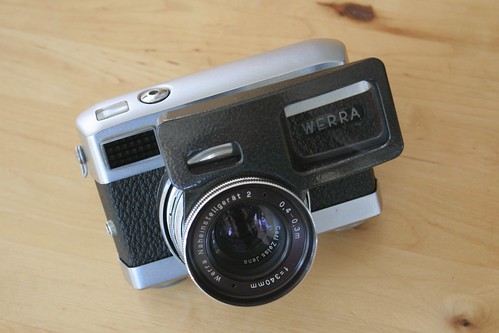
But there is an even stranger accessory, the Doppelwerra.
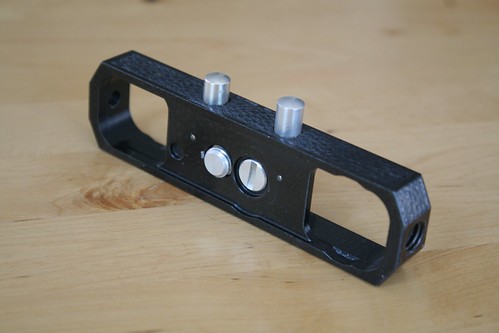
Its a metallic mount piece with two screws to fasten two Werras together.
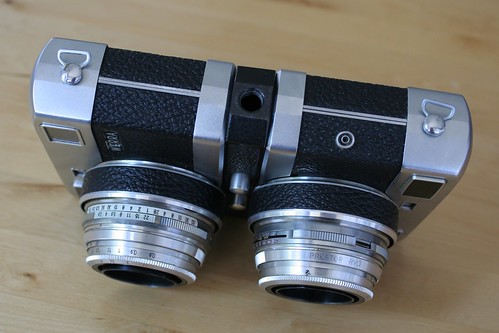
But contrary the common belief it has nothing to do with stereo photography or any kind of 3D. (The lenses are not in the same level so it would be impossible anyway.) The use of the Doppelwerra is to allow us to take the same photo on two different films (usually a colour and a bw).
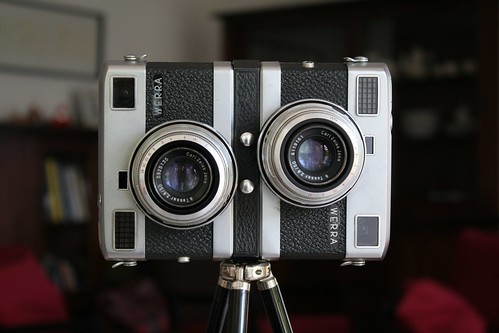

Here are some night shots I took with my Werra Matic having the Tessar on it:
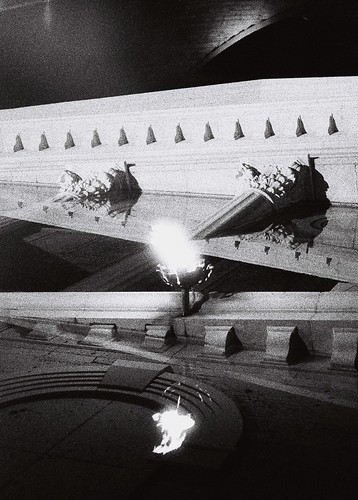
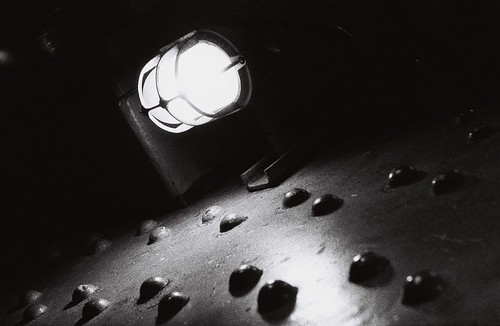
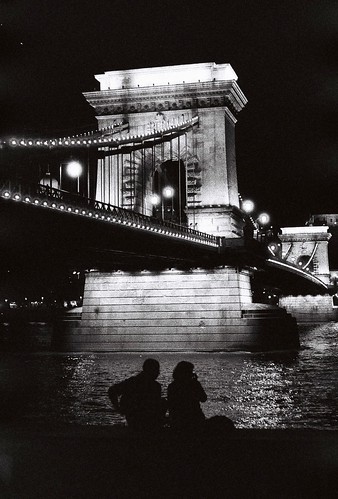
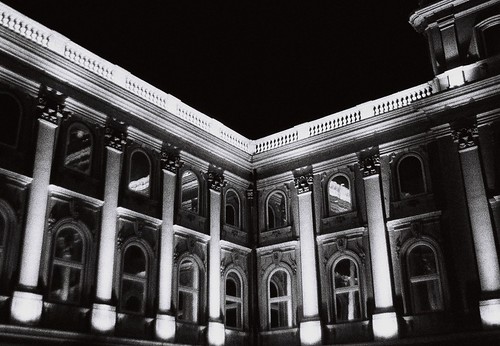

The light conditions were not easy as you see but the multi-coated lens could handle them quite well. The Tessar produces good result on color film as well.
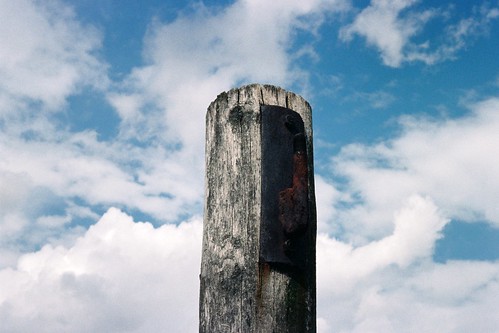
Now some shots with the Flektogon.
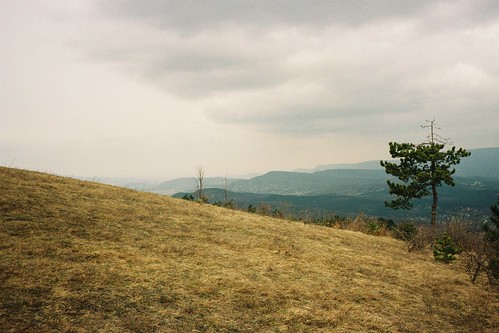
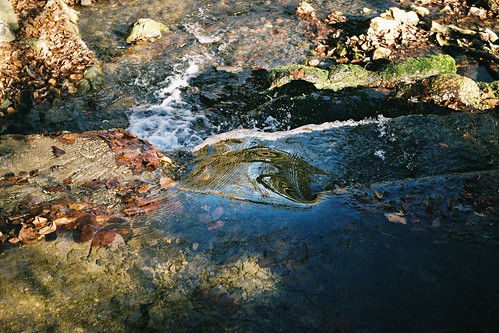
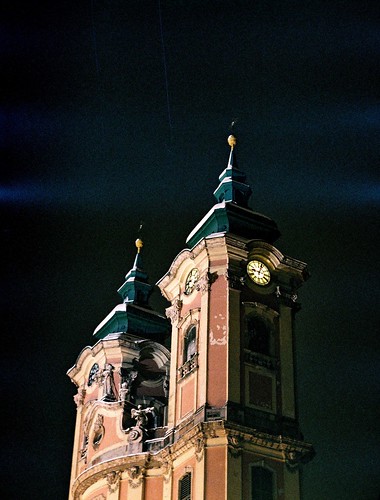
The Werra Matic is one of the tops of the 35mm camera making. It is reliable, easy to use, offers 1/750 speed by a precision clock-like metal leaf shutter, has interchangeable lenses, makes sharp pictures, can handle every possible light condition, is more usable than anything of that age, and its small. To be like this, it has to be extremely complex - and it is indeed. The amount of effort the design of such a complex thing needed would have been impossible to put into a mid-priced camera in the profit-oriented West. The Werra Matic is the proud child of the socialist DDR where profit wasnt an issue.
Werra is my everyday vintage camera. If I need something reliable: I take the Werra. If I have to deal with tricky light conditions: I take the Werra. If I would like to be sure not to miss a shot while wrestling with the knobs and rings and pegs: I take the Werra. If it comes to night shots or interior: guess what, I take the Werra. And it amazes me every time.
Subscribe to:
Posts (Atom)



